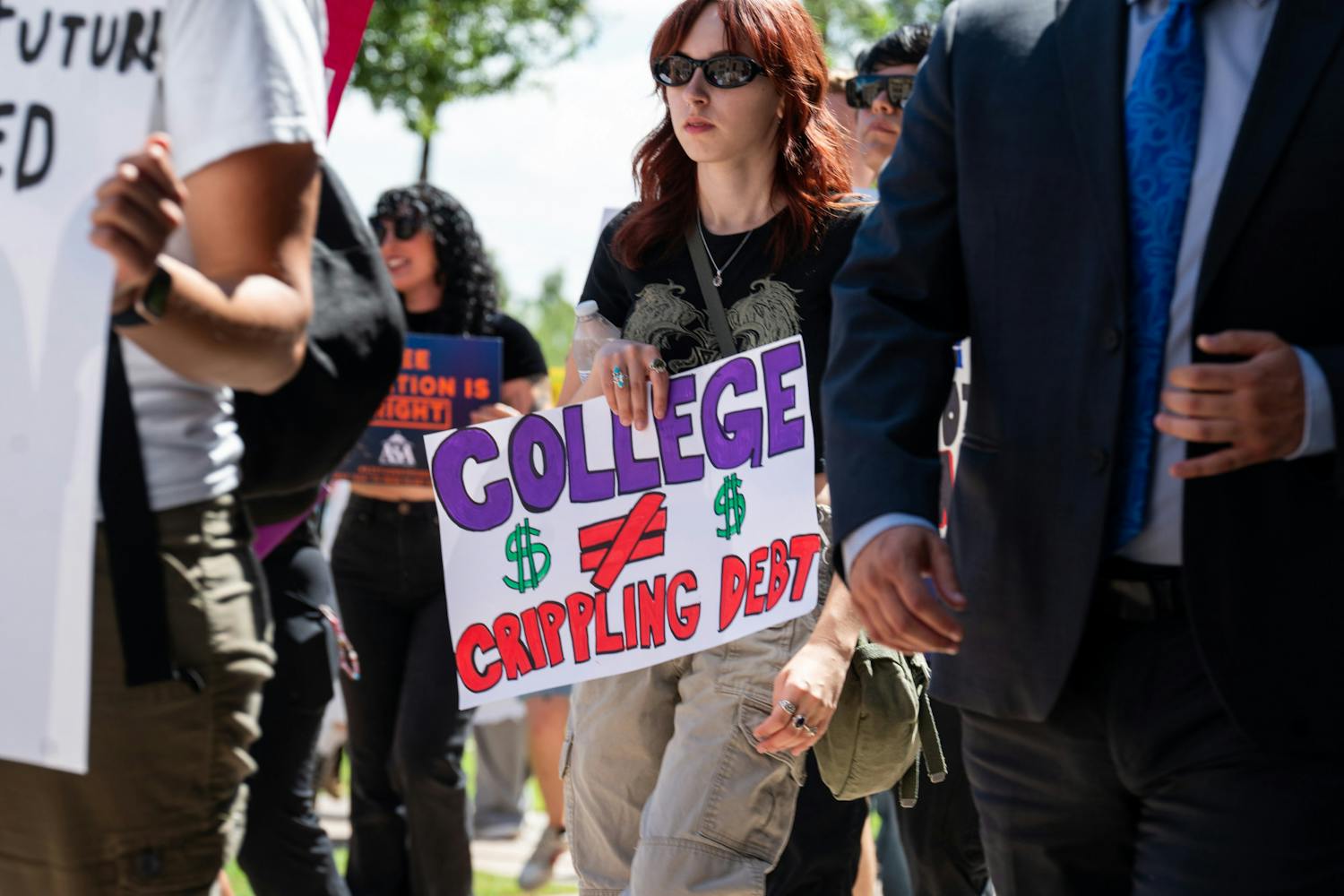It's a crisp, cool Tempe morning and the 8:20 Greyhound bus is not here.
It is an hour late, but three people still wait. None of them seem all that surprised or upset.
A woman with long, dark hair sits on a metal bench, legs crossed, waiting patiently. An elderly lady with a cane wanders back and forth on the sidewalk. A young man spreads his multitude of bags across the remaining seats and leans on the Greyhound sign.
The three of them are like many bus travelers, a lot of whom are students. They assume they are saving money by avoiding airlines.
"It has never been this late," says 20-year-old Daniel Mook from Connecticut.
After riding the Greyhound from Connecticut to Arizona, Mook has quite the cross-country bus travel resume.
He rips open one of his two plastic bags, sitting on the bench next to his tan duffel, and reveals his bus survival kit: a Discman with CDs and some picture albums.
"That's what I do," he says with a smile, shaggy hair dropping over his face. "I listen to music and I sleep."
In fact, he sleeps quite a lot. On his way to Arizona from Colorado, Mook slept through all of the Phoenix-area stops, finally waking up when the bus pulled into Lordsburg, N.M. He had to get back on the bus to Phoenix.
"It was just me and four or five other guys, so I just stretched across the seats and passed out," he says.
Sleeping arrangements on Greyhounds differ in levels of discomfort by bus. There is only so much that can be done with polyester seats and a solid foot and a half of legroom.
Mook says that there are two types of Greyhound buses: old and new. One of the two has armrests between the seats, which can be folded up, but still stick uncomfortably into the napper's back.
"If you want to fall asleep in a bus like that, you have to work around the hump," he says, demonstrating the contorted maneuver by craning his neck around to the side. "Or you can go sleep on the bench seat in the back, by the bathroom. But that can have some bad smells."
Mook wrinkles up his nose recalling some of the worst Greyhound scents, usually on longer trips with a really full bus.
"On the way back from Lordsburg, the bus was completely full and every seat was taken," he says. "It was miserable. And oh man, it smelled."
A warm day on a full Greyhound can conjure odors reminiscent of a trip to the garbage dump, sewage treatment plant and a big city subway station. Mook's trip through the desert fit these requirements.
Mook is waiting to catch the bus back to Connecticut via Missouri. The trip to Missouri alone will take a little more than two days. Mook says he doesn't mind how long it takes because riding the bus is cheaper.
Yet, a quick check online reveals that a one-way bus ticket to Hartford, Conn., from Phoenix costs $192. The cheapest Southwest Airlines flight on the same route is $129.
Unfortunately, tardy and overpriced transportation is not limited to Greyhound buses. Political science and economics senior Rachel Gross rode an Amtrak train from her home near Seattle, Wash., to Washington D.C. last summer.
She was planning on meeting a friend in Fargo, N.D., for a couple days, but his Greyhound bus was 12 hours late.
"My train got in at 2 a.m., but he was not there yet, so I went to this 24-hour restaurant -- The Frying Pan -- and read the entire 'Brothers Karamazov,' drank a whole pot of coffee and went to the bathroom every half hour until his bus got in," Gross says.
On her way from Fargo to D.C., however, Gross ran into problems.
"See, they give freight trains priority over passenger trains," she says, "and the trains are always delayed."
The train was three hours late leaving Chicago, then picked up another four hours before hitting the Appalachians, she says. By that point, she had realized that there was no way the train would arrive in D.C. in time for her scheduled internship interview.
Gross eventually disembarked from the train an hour outside of D.C. A freight train had broken down in their path and the conductor had no idea how long it would be. She took the metro into the city and arrived, finally, a full 10 hours late.
Gross's cross-country train ticket cost $221. A plane ticket would have cost $180, but she says she wanted to see the country.
She says she had no idea cross-country train travel would include multiple delays and obnoxiously drunk elderly male passengers who talk incessantly and hit on young girls.
Mook, who SPM left still waiting for his bus to Connecticut, makes himself as comfortable as one can get on a metal bench.
"Ah," he says, shrugging his shoulders, "I don't mind the time."
Reach the reporter at katie.kelberlau@asu.edu.




